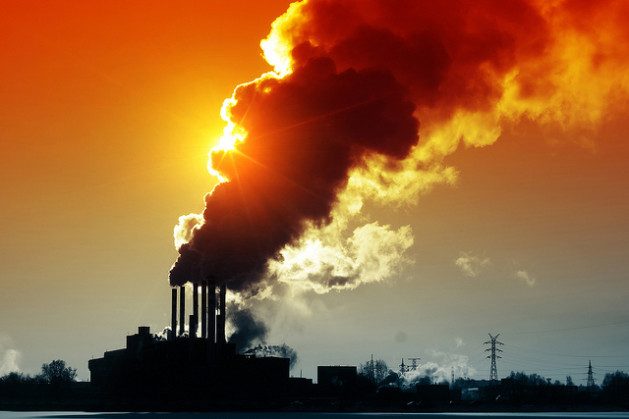The Fatal Attraction of the City

MADRID, Oct 03 (IPS) - While cities are seen as a symbol of glamour and comfort for a number of their residents, over one billion people continue to live in overcrowded settlements with inadequate housing. And their number is rising every single day.
Yes, life in urban centres represents plenty of offices, constructions, job opportunities, shops, bars, restaurants, transport systems, and health and education services. So much that 2 of 3 people are forecasted to be concentrated in urban areas by 2050.
But this is only one side of the coin.
The other side is that the current fast and unplanned urbanisation of the world’s population has transformed cities into a major generator of pollution that is increasing and accelerating climate catastrophes.
Indeed, urban centres are now among the largest greenhouse gas emitters due to the excessive use of cars, trucks, airports, train stations, inadequate buildings, heating and air conditioning, noise and light pollution, housing shortage and too expensive rents.
Cities: 70% of CO2 emissions
Much so that cities are responsible for 70% of global carbon dioxide emissions, with transport, buildings, energy, and waste management accounting for the bulk of urban emissions.
This year’s World Habitat Day (3 October) looks at the problem of growing inequality and challenges in cities and human settlements, as a consequence of such a rapidly growing urbanisation.
The Day also seeks to draw attention to the growing inequalities and vulnerabilities that have been exacerbated by the triple ‘C’ crises — COVID-19, climate and conflict.
Inequalities
On this, it warns that the pandemic and recent conflicts have reversed years of progress made in the fight against poverty, resulting in the emergence of newly poor people — those who would have exited poverty in the absence of the pandemic but remain poor, and those who have fallen into poverty on account of the pandemic.
In fact, according to the 2022 UN-Habitat’s World Cities Report, the number of people affected was between 119 and 124 million in 2020, and between 143 and 163 million in 2021.
The report underlines that tackling urban poverty and inequality have become an “urgent global priority,” adding that “to prepare urban areas for future catastrophes, we need to start with cities."
Exclusion
This very month also marks the 2022 World Cities Day on 31 October.
The Day warns that too often this is not the shape of urban development. “Inequality and exclusion abound, often at rates greater than the national average, at the expense of sustainable development that delivers for all.”
Urban October was launched by UN-Habitat in 2014 to emphasise the world’s urban challenges and engage the international community towards the New Urban Agenda.
See some facts:
- Until 2009, more people lived in rural areas than in urban areas.
- Today, around 55% of the world’s population lives in towns and cities, with the level of urbanisation projected to reach almost 70% by 2050.
- Much of the growth in urban populations will take place in Asia and Africa, especially in China, India and Nigeria where the fertility rates remain high.
- Cities are here to stay, and the future of humanity is undoubtedly urban, but not exclusively in large metropolitan areas.
- Urbanisation will continue to be a transformative, but uneven process that will require differentiated responses depending on the diversity of the urban context.
- The worst-case scenario of urban futures will have disastrous consequences for cities; thus, resulting in economic uncertainties, environmental challenges and exacerbating existing vulnerabilities.
- A business-as-usual approach will result in a pessimistic scenario of urban futures characterised by the systemic discrimination and exclusion of the poor in urban agendas.
- Any vision for an optimistic future of cities must embody a new social contract with universal basic income, health coverage and housing.
There is another oftenly unseen problem: every time a farmer migrates to an urban centre means one food consumer more. And one food producer less.
What is the future for cities?
In view of the above, if business continues as usual, the future will only worsen the past and the present situation.
Indeed, most cities are not able to meet the triple objective of being economically productive, socially inclusive and environmentally sustainable, according to the United Nations findings on the occasion of the World Habitat Day.
The world’s body also identifies the priorities that include ensuring access to a clean water supply, functional sanitation, and appropriate sewage and waste disposal.
Also providing sustainable and efficient mobility; promoting more compact, safe and healthy settlements; and enhancing resilience against climate change, extreme weather events and disease transmission.
Mega cities
Currently, Tokyo is the world’s largest city: 38 million residents, followed by Delhi (30 million inhabitants); Sao Paolo in Brazil (22 millions), and seven more mega urban centres which are home to 20 millions or more, like Cairo (22 millions), Dhaka (21 millions), and Beijing, with more than 20 millions, just to mention some.
Are cities the best place to live in?
Up to you to judge. But please remember that big urban centres, by attracting high numbers of people, also generate social tensions, deep inequalities, violence, and criminality.
And that fancy innovations like growing food in vertical gardens, on the roofs of buildings, do not seem to be enough to solve the many challenges facing such an urbanised world.
Nor is it the unstoppable growth of the “modern slums” such as the case of vast neighbourhoods being built and used mainly as “bedrooms.”
Are there any serious plans to improve the harsh living conditions in rural areas, instead of transforming them into vast industrialised and urbanised centres, surrounded by energy fields converging farming lands with solar panels, windmills, power and telecommunication towers and endless highways?
© Inter Press Service (2022) — All Rights Reserved. Original source: Inter Press Service
 Global Issues
Global Issues